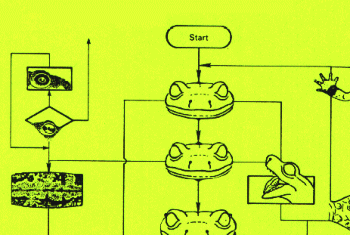

Ted Nelson's approach to hypertext followed the remarks made in an essay in 1945, 'As We May Think' by Vannevar Bush, the then Director of the Office of Scientific Research and Development. In this essay, Bush describes an imaginary contraption, that would aid in dealing with the ever increasing specialization and volume of published technical information. Particularly, he was concerned about the continued breakdown between the various fields of study due to the lack of cooperation in information retrieval and analysis. Bush conceived of a mechanism of information manipulation which he believed to mimic the way the mind worked: It operates by association. With one item in its grasp, it snaps instantly to the next that is suggested by the association of thoughts, in accordance with some intricate web of trails carried by the cells of the brain. Bush's conception of a 'mesh of associative trails' became translated in Nelson's hypertext formulation as links to other informational sources, whether they be a word, other texts, or audio/video multi media.
Nelson's intention to create a 'docuverse' of all known knowledge and cast it into a form most accessible for those with short attention spans, became the ill fated 'Xanadu' project (see Gary Wolf's extensive article 'The Curse of Xanadu', in Wired (June 1995), p. 137.). As the polite folks at suck ('a fish, a barrel, and a smoking gun') point out in their article 'Xanadu Redux, Part I' from February 16, 1996:
Ted Nelson's Xanadu got it right - name your technical project after a drug-induced poem that was never completed (or, as some literary critics argue, was never meant to be completed) and follow suit with a series of confused ramblings and managerial blunders, jettisoning several million dollars for "development" in the process to secure the legend. Then, exile yourself and your followers to Pacific Rim countries, and redefine your product as a licensable "concept," not a technology.
That Nelson's inspiration to create hypertext as a cure for a nervous dysfunction, has some curious parallels to the activities of those individuals who suffered from American nervousness, a more or less technologically induced illness prevalent during the end of the last century and the beginning of this one. It is indeed ironic that Web browsing, like channel-surfing, is a drift upon the surface appeals of pure information. It does not matter what exactly catches our fancy, just that our fancy be titillated in some way. It functions as a strange attractor and catches our imagination for only a short period of time. Our moth-like interests are quickly extinguished in the flame of curiosity, we become what we seek, and no memory trace of it remains.